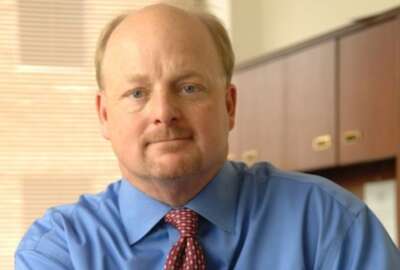EPA, HUD search for ways to keep mid-career feds
Mid-career employees are a scarcity in government. While agencies are awash with employees at the early career stage and those with 20-plus years of federal...
wfedstaff | April 17, 2015 4:57 pm
Agencies are launching new efforts to keep employees who have between five and 10 years of experience in government.
That’s about the time when many consider moving to the private sector. But it’s also the time when many are ready to move up the career ladder.
The dearth of these employees is causing a bathtub effect in government where a lot of employees are at the early career stage and a lot of feds are at the 20-plus career stage, but not enough are in the middle stages.
The Environmental Protection Agency is one of several agencies trying to reduce the slope of the curve. 
Perciasepe said there are several technology options for sharing employee capabilities and those that they want to improve upon. He said the younger employees tend to be attracted to this type of initiative.
Under-5 group
At the Department of Housing and Urban Development, Secretary Shaun Donovan said the agency launched HUDConnect about a year ago.
“It really has spawned all these interest groups where folks are sharing ideas, thoughts about the agency, knowledge in ways we could never have created just by saying we will start a group for X or for Y,” he said. “We started to connect those employees very intentionally to our younger employees. We have an under-five group — not that they are under-5-years-old-but they’ve been at HUD for less than five years. We’ve connected them with some of our most experienced managers at our agency. It’s been a great thing for both the folks who have been there 30- 40-50 years as well as for these younger employees to get to how do you build careers and get the younger folks to stay.”
Part of the challenge in getting younger people to stay is to improve morale.
Across the board, federal employee morale is low. A Federal News Radio online anonymous survey in January of visitors to our website found their own morale level was low, and they rated the morale level in their offices even lower.
The top three “morale killers,” according to federal employees, were, in order, pay freezes, ineffective leadership and fed bashing from Congress and the public.
Donovan, Perciasepe and others on the panel recognize the morale problems they face.
Listen to your employees
The common theme among the panelists was to make sure employees know they are valued.
For example, Donovan said he holds agencywide virtual town hall meetings regularly. 
HUD hasn’t fared well in the Best Places to Work Survey done by the Partnership, coming in 20th in 2012. It’s trying to improve morale, in part, through the HUDConnect effort.
Donovan and several others said they also meet with employees when they are traveling.
Clarify of vision
Homeland Security Secretary Janet Napolitano said she not only meets with employees, but she offers them something more.
“One of the most important things senior leadership needs to do is have a clarity of vision,” she said. “It’s not just communicating and saying you’re doing a great job. It’s really saying, ‘This is where we are going and we’re going to have the crisis du jour, we will have the congressional hearing to deal with or the media piece that is out there, or whatever.’ There needs to be a longer term, a bigger vision, and then communicating that so people understand their role and what it is you want them to do. You are not only praising them for their efforts, but holding them accountable for helping that vision be achieved. I think good accountability also helps build good morale.”
Napolitano also said DHS’ efficiency reviews are another example of listening to employees and putting those ideas into practice. She said the 43 initiatives has saved DHS or avoided spending more than $4 billion over the last four years.
Napolitano also said the agency has been focusing on improving the frontline supervisors’ leadership skills. She said the Federal Employee Viewpoint Survey highlighted that as a specific weakness across DHS.
Dan Tangherlini, the acting administrator of the General Services Administration, also said his agency’s Great Idea hunt is another example of turning to employees for help. GSA received 600 ideas and more than 20,000 comments on ways to improve the agency.
And at EPA, Perciasepe said he tries to involve the career senior management more in the decision making process.
“They need to feel their part, their expertise is being embedded into the system, and they are able to make a difference in the same way I want to make a difference while I’m in public service,” he said. “We’ve created processes through the executive management council, which are the career leadership, and other tools.”
All four agency leaders said they recognize it’s a tough time to be federal employees now, especially with all the uncertainty created by sequestration, but the passion for service is the overarching factor that keeps them and many employees coming to work each day.
RELATED STORIES:
Low morale? You’re not alone, new federal survey shows
Highest ranked agencies distinguished by strong leadership
Grassroots group trying to improve employee morale at HUD
Planning, performance measures put DHS on solid financial footing
Copyright © 2025 Federal News Network. All rights reserved. This website is not intended for users located within the European Economic Area.
Jason Miller is executive editor of Federal News Network and directs news coverage on the people, policy and programs of the federal government.
Follow @jmillerWFED






